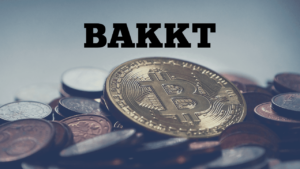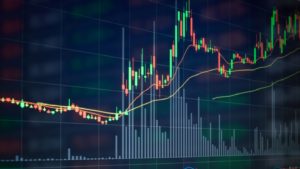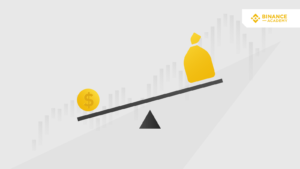
2019 has been an interesting year in the crypto market, with Bitcoin potentially building the foundation for its next bull run, and many changes taking place within the overall landscape of the cryptocurrency industry in terms of assets, trends, and even regulation.
The market is maturing, investors are becoming savvier, and crypto companies have begun adapting to the new market environment by offering unique products and services that cater to new, growing trends.
With the close of 2019 inching closer and closer, and the holiday season almost here, it’s time to begin to look forward into the new year, and analyze any emerging trends across the cryptocurrency market that may have a major impact in the future of the space.
Institutional Investors Enter The Market
Bitcoin has only just turned 11 years old, and while a decade is indeed a long time, it and other cryptocurrencies are among the youngest financial asset classes in the market.
The value and price action of the young digital asset class thus far has been mostly driven by retail investors, and early adopters who either became attracted to the asset class due to the promise of the underlying technologies behind each asset, or by the promise of untold riches generated from buying an asset before it takes off.
But the tides are turning, and retail traders burned by the bubble pop in late 2017, have almost completely left the market, and taking their place is a surge in institutional investors.
 Source: namecoinews.com
Source: namecoinews.com
For some time, institutional investors had few platforms to trade on, and even less in the way of trusted custodial services in which to hold their enormous wealth in crypto assets. However, this past September, New York Stock Exchange parent company Intercontinental Exchange, launched a new Bitcoin trading desk and holdings service called Bakkt, aimed at luring in new institutional investors.
The platform launched to much disappointment, however, trading volume has more than doubled in recent weeks, suggesting that institutions are finally getting into the fold and beginning to trade the first-ever cryptocurrency on Bakkt.
The addition of these high wealth investors buying up an already scarce digital asset is believed to drive the price of Bitcoin up significantly. And with the asset’s halving coming up in May, there will be even less Bitcoin being released into the market, further offsetting the delicate balance of supply and demand in favor of increasing prices.
Combining Crypto With Traditional Assets
Retail investors that stuck with crypto, through the emerging digital asset class have learned more about investing and trading, and have since matured greatly. While they typically got their start in crypto assets due to the ease of access and lack of meeting certain investor requirements, they have since begun taking interest in other, traditional financial markets and assets.
Bitcoin traders have become particularly interested in building portfolios across other, uncorrelated assets, in order to balance out their risk exposure and open up additional avenues for profit.
By learning to trade over the last few years, Bitcoin and crypto traders are now trying their hands successfully in other markets, such as commodities and stock indices.
Additionally, Bitcoin traders may be increasingly looking toward precious metals such as gold and silver, which are growing alongside Bitcoin in the face of economic turmoil.
The surge in interest from traders and investors seeking exposure to traditional markets has led to a variety of crypto trading platforms adding traditional assets to their digital asset lineup.
eToro offers a number of traditional markets for traders, and PrimeXBT recently expanded to feature stock indices, commodities, forex currencies, gold, silver, and more, alongside Bitcoin-based margin trading and other popular crypto-assets such as Ethereum, Ripple, EOS, and Litecoin.
Traders are now able to further minimize risk and maximize profit potential, by strategically spreading wealth across a variety of uncorrelated and anti-correlated markets. The trend is something all traders should consider if their platform of choice offers additional assets outside of cryptocurrencies.
Stablecoins To Open Doors To Greater Liquidity
 Source: tradersdna.com
Source: tradersdna.com
Among the most prominent topics across the cryptocurrency industry currently, is the emergence of stablecoins, their impact on the market itself, and what the future may hold for them. Stablecoins are typically tied to the prices of government-backed fiat currencies and are typically backed themselves by a corresponding amount of that fiat currency or other assets like gold or real estate.
For a long time, Tether dominated the crypto market and still does even today, earning it a seat in the top ten cryptocurrencies by market cap. Tether is used to easily move funds across the web, all while maintaining a specific value as each stablecoin – as the name suggests – keeps a stable price and isn’t affected by the volatility of the crypto market.
Since Facebook announced the debut of its own stablecoin cryptocurrency, Libra, the fight for the most dominant stablecoin has heated up and is bubbling over. It’s even caused the financial market and government regulators to take notice.
The emergence of stablecoins may put Bitcoin’s long-term potential and dominance in jeopardy as a more stable, centralized asset capture market share across the market. At the same time, these stablecoins are often traded against Bitcoin via trading pair, providing even more liquidity to the Bitcoin market for traders to tap into. If any of these stablecoins eventually replaces a fiat currency at scale, the added liquidity could be a major factor for Bitcoin traders.
And the fact that controversy continues to surround Tether leaves room for a black swan event that could send the price of Bitcoin tumbling and create an opportunity for short sellers to turn a profit. The stablecoin continues to be a dark rain cloud surrounding the market, and if a storm comes, it could cause extreme volatility, unlike the market, which has yet to witness.
Trading Community Growth and Paid Group Accountability
There’s no shortage of traders across the cryptocurrency market who market themselves as so-called gurus, offering to buy and sell signals to traders en masse, and turning a profit from new traders hoping to learn successful strategies.
 Source: tradersdna.com
Source: tradersdna.com
But it’s difficult unless traders are offering a real-time look at trades and balance sheets, to know if the paid group is worth the cost of entry. All too often, traders are taking to social media to complain about paid group leaders who either lack regular updates of value or who constantly flip flop positions privately, only to later gloat about wins publicly, making it appear as if they were a modern-day Nostradamus making near-perfect predictions each time.
The crypto community has become fed up with this trend and is actively working to change the trend towards one of accountability. Top traders are now coming out and challenging other traders who use shady business practices, hoping to expose them and save other, new traders from being burnt by scams.
In addition, paid review group websites and Telegram channels have begun popping up, offering up to a five-star rating on the success rate of various paid groups across the crypto market. It’s caused all traders offering such signal groups or trading advice to step up their games or risk being exposed.
Margin Trading Competition Continues To Heat Up
Margin trading has been around for some time in the crypto market, but the trend only continues to grow and the competition continues to heat up.
 Source: BinanceAcademy
Source: BinanceAcademy
Trading using leverage allows traders to take positions sizes that are much larger than their initial deposit, which also multiplies any profits generated by a large factor. Margin levels across the crypto industry range from 3x, to 5x, to as much as 50x and 100x, depending on the platform.
Binance recently unveiled 125x margin trading on its newly released platform, while BitMEX, Deribit, and PrimeXBT offer up to 100x margin trading on Bitcoin. PrimeXBT offers up to 100x on other crypto assets as well, and up to 1000x on other traditional assets like forex currencies, providing the best possible opportunity to grow profits and capital quickly and efficiently.
It’s important to note that while margin trading can make a trader rich in just a few successful trades, a trader must ensure the platform they’re using is reliable and offers advanced features for proper risk management.
Last month, popular margin trading platform Deribit suffered a flash crash that caused Bitcoin’s price to drop thousands of dollars in seconds, liquidating traders who couldn’t prepare for the surprise volatile movement. Any margin trading platform needs to offer a reliable trading engine so such occurrences aren’t common, along with the right tools for users to carefully set stop losses or take profit levels, to ensure all positions are protected even in the case of extreme and unexpected volatility.
The trend of margin trading in Bitcoin markets is only set to grow as traders seek to generate more and more profit from their trades, and is sure to be a top trend in 2020 and beyond.
Featured image: chainbits.com

coindoo.com is author of this content, TheBitcoinNews.com is is not responsible for the content of external sites.
Our Social Networks: Facebook Instagram Pinterest Reddit Telegram Twitter Youtube










